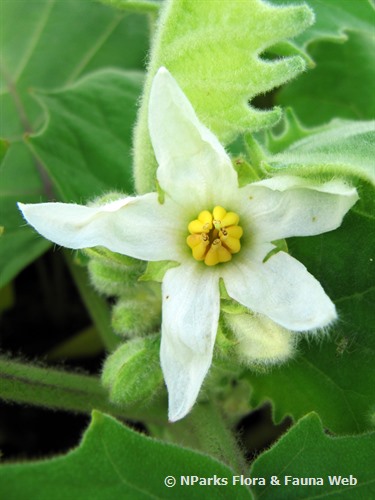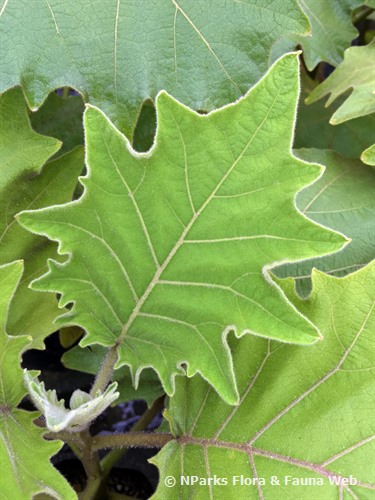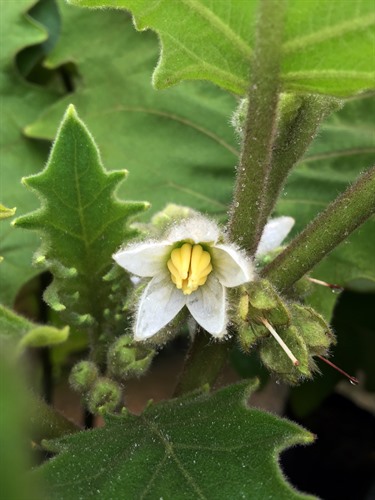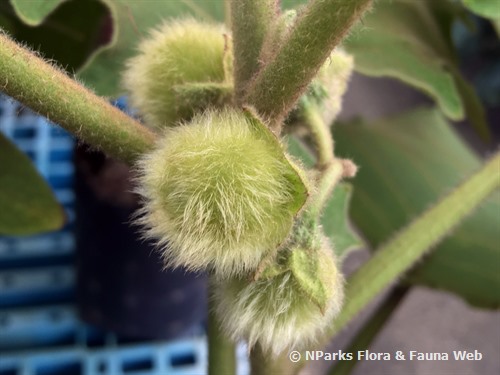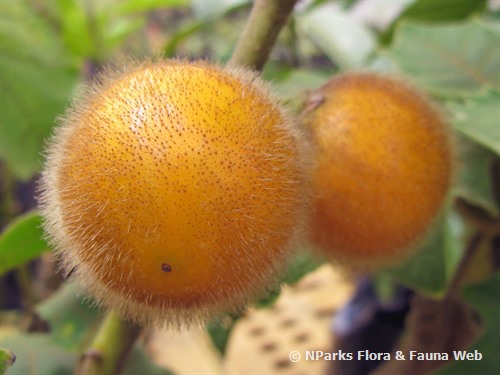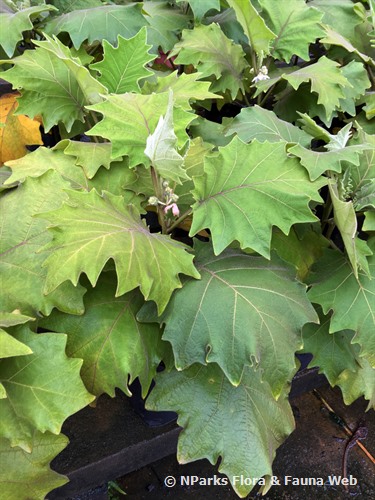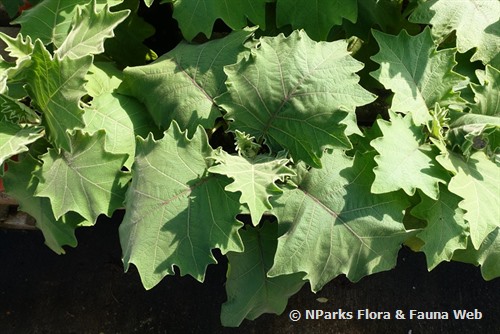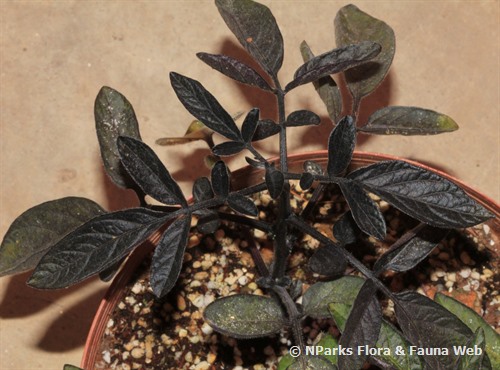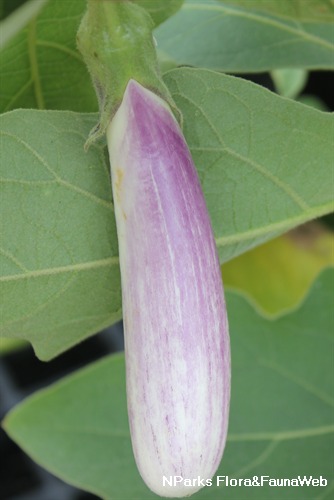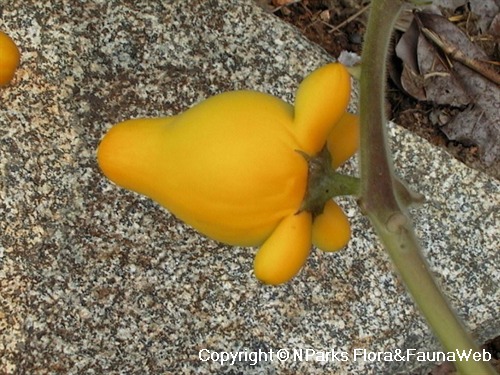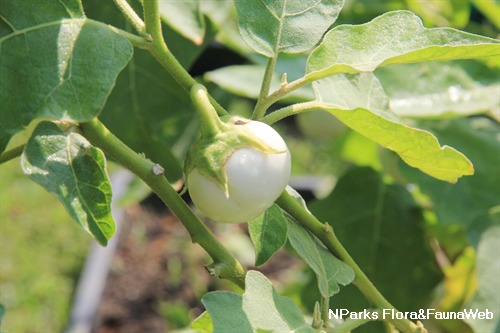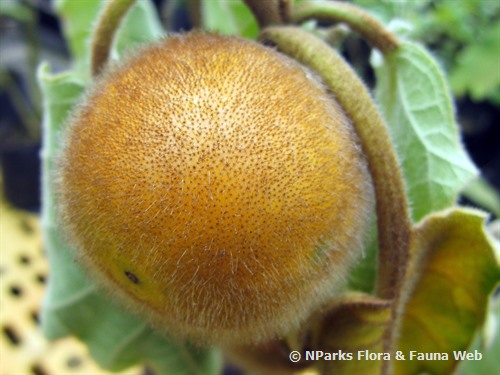
Back
Solanum stramoniifolium Jacq.
| Family Name: | Solanaceae |
| Common Name: | Coconilla, Bolo Maka, Bura-bura |
Name
Classifications and Characteristics
| Plant Division | Angiosperms (Flowering Seed Plants) (Dicotyledon) |
|---|---|
| Plant Growth Form | Shrub |
| Lifespan (in Singapore) | Perennial |
| Mode of Nutrition | Autotrophic |
| Plant Shape | Shrubby |
| Maximum Height | 2 m |
| Maximum Plant Spread / Crown Width | 2 m |
Biogeography
| Native Distribution | Central and Southern Tropical America, Trinidad-Tobago |
|---|---|
| Native Habitat | Terrestrial |
| Preferred Climate Zone | Tropical |
| Local Conservation Status | |
| CITES Protection | False |
Description and Ethnobotany
| Growth Form | Erect or spreading shrub up to 2m. |
|---|---|
| Foliage | The large, lobed leaves have a softly hairy texture. |
| Stems | The semi-woody stems are armed with prickles. |
| Flowers | Star-shaped, whitish flowers are usually solitary. |
| Fruit | Furry, ball-shaped fruits (1.2-2.4 cm wide) are orange or red and nestled in the leaf axils (the area where the leaf stalk is connected to the stem). |
| Cultivation | It grows best in well-drained soil. |
| Ethnobotanical Uses | Edible Plant Parts : Edible Fruits Food (Fruit or Vegetable): The edible, juicy berries are typically eaten raw. The fruits are usually harvested from the wild in tropical America, but sometimes cultivated in Colombia and Peru. |
Landscaping Features
| Desirable Plant Features | Ornamental Fruits |
|---|---|
| Landscape Uses | Small Gardens |
| Thematic Landscaping | Economic Garden |
| Usage Hazard - Cons | Spines/Thorns - Stem/Branch, Spines/Thorns - Leaf |
Fauna, Pollination and Dispersal
| Pollination Method(s) | Biotic (Fauna) (Insects (Bee)) |
|---|
Plant Care and Propagation
| Light Preference | Full Sun |
|---|---|
| Water Preference | Moderate Water |
| Rootzone Tolerance | Moist Soils, Well-Drained Soils, Fertile Loamy Soils |
| Propagation Method | Seed |
Foliar
| Foliage Retention | Evergreen |
|---|---|
| Mature Foliage Colour(s) | Green |
| Mature Foliage Texture(s) | Velvety / Furry / Tomentose |
| Prominent Young Flush Colour(s) | Green - Light Green |
| Young Flush Texture(s) | Velvety / Furry / Tomentose |
| Foliar Type | Simple / Unifoliate |
| Foliar Arrangement Along Stem | Alternate |
| Foliar Attachment to Stem | Petiolate |
| Foliar Shape(s) | Non-Palm Foliage (Oval) |
| Foliar Venation | Pinnate / Net |
| Foliar Margin | Pinnately Lobed / Pinnatifid |
| Foliar Apex - Tip | Acute |
| Foliar Base | Rounded / Obtuse |
| Typical Foliar Area | Mesophyll ( 45cm2 - 182.25 cm2 ) |
Fruit, Seed and Spore
| Mature Fruit Colour(s) | Orange, Red |
|---|---|
| Mature Fruit Texture(s) | Velvety / Furry / Tomentose |
| Fruit Classification | Simple Fruit |
| Fruit Type | |
| Mature Seed Colour(s) | Cream / Off-White |
| Mature Seed Texture(s) | Smooth |
| Seed Quantity Per Fruit | Numerous (>20) |
Image Repository
Others
| Master ID | 33626 |
|---|---|
| Species ID | 8040 |
| Flora Disclaimer | The information in this website has been compiled from reliable sources, such as reference works on medicinal plants. It is not a substitute for medical advice or treatment and NParks does not purport to provide any medical advice. Readers should always consult his/her physician before using or consuming a plant for medicinal purposes. |

